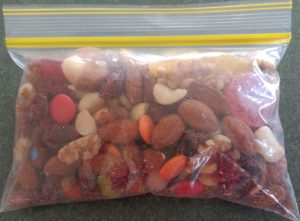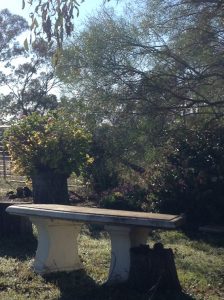
With dramatic stories of doom and gloom flooding the media in recent times, I’ve found myself digging into my store of calming techniques for fear and anxiety. I figured you might find them useful too, after all, we’re all experiencing a global pandemic together – something that none of us have had to deal with before. This article explores the nature and purpose of fear and gives you a list of action-based techniques and a list of mind-based techniques that have a calming effect on anxiety and fear.
Fear is the voice in your head trying to keep you safe
Fear is the voice in your head telling you a story that sets off a chain of physiological and psychological responses. This gets you prepared to fight off danger whether it’s really there or not, to run away from it in pursuit of self-preservation, or to freeze.
As much as we may not like the sensations that fear brings, we need to allow it. It’s helped to keep the human race alive so far by signalling to us and enabling us to draw away from danger and move towards safety.
So how do we keep these voices of fear in check so that they do their job of keeping us safe without stopping us from living a healthy and fulfilling life?

The biology of fear through the ages
Biologically, for some of us, our brains and bodies excel at responding to fear. In days gone by, we were the warriors, chiefs and the village leaders who led our families to safety, found shelter from storms, fought off predators and kept everyone together. In our modern world it’s easy to forget that people led very physically active and outdoors-based lives not that many years ago. Bodies were in constant motion throughout the day and in tune with nature and with their wired brains – the perfect combination.
But today we’ve removed a lot of the physical movement from our lives and we’ve become disconnected from the outdoors and often from each other and our inner selves too. We’ve organised the world around us to protect us from weather and hard labour. Many of us live in permanent housing in societies with building regulations requiring our homes to be resistant to cyclones, tornadoes, rain, snow, hail, and wind. We shop for our food rather than hunt and gather it. Most people around the world commute using motorised transport rather than human power. And everywhere we look there are labour saving devices such as food processors and power tools.
The signs of fear and anxiety
Although our physical activity levels have reduced and we spend a lot of time indoors, our wired brains continue to go searching for danger and find it everywhere. This is exacerbated when something unexpected happens, such as the current corona-virus pandemic. For many of us, our bodies are not moving enough or connected with the world in ways that stimulate the physiological changes that keep a calm equilibrium and so we experience more signs of anxiety including:
- ruminating thoughts
- difficulty sleeping
- sweating
- feeling on edge, irritable
- distracted
- difficulty concentrating
- body tension
- aches, pains and nausea
- lethargy
- restlessness

Action-based calming techniques for fear and anxiety
When we understand the physiology of fear, that is, what’s happening in our bodies when we feel anxious, we can begin to take actions to calm it. Calming actions may include:
- set boundaries around your sedentary activities, for example, give yourself permission to use your electronic devices at set times of the day, put them away at night, set a limit on your daily quota of usage, and limit the number of times you check the news and social media
- move more, sit less – move as much as you can during the day and get outside whenever it’s safe to do so
- exercise for 30 – 60 minutes each day, preferably in the morning so you’re energised for the day ahead and it doesn’t disrupt your sleep at night
- spend time with people whose company you enjoy or create a tribe of like-minded people – this can be face-to-face (when health directives allow this once again) but don’t forget there is great value in connecting with others online or by phone, video-conference (eg Skype), text and through social media groups
- get creative and constructive doing hobbies or other tasks
- participate in regular yoga, meditation or breathing practices – if you can’t go to a group class, try using an app, online class or a YouTube tutorial
- watch a funny movie or a comedy show – laughing helps you breathe deeply and relax
- talk to a professional
- drink plenty of water and feed your body with good nutrition
- spend time outdoors connecting with nature using your senses to be fully present in that space and time
- watch your posture – shoulders back, head held high and breathe fully and deeply
- have a massage to release tension from your muscles
- give yourself a head massage
- use your senses to connect with activities that you find relaxing, for example think about what things you can look at, listen to, smell, taste or touch that brings you joy
- work on improving your sleep – if you are having trouble sleeping, read my Top Ten Tips for a Good Night’s Sleep
- rest or have a nap in the morning or early afternoon if you need to

Mind-based calming techniques for fear and anxiety
Your mind is a mighty powerful tool that can also contribute to a sense of calm. Using your mind in this way can be a bit tricky if you haven’t done it before so here are some techniques to get you started:
- talk to yourself using a calm, kind and rational voice
“I know you’re feeling scared. Is it actually dangerous, or does it simply feel scary?”
“What can I do to minimise the risk and maximise the benefits / enjoyment in this situation?”
“What do I have control over in this situation? Hmmmm…. Okay, let’s just focus on that”
- choose a positive intention or attitude for the day that will help you stay calm eg “Just breathe” or “I’ll start each day with movement and exercise”
- remind yourself about fear’s purpose and that even in low risk situations your brain is wired to search for the danger, the difficulties, the problems – but this is only part of the whole picture
- tune in to yourself and notice what’s happening in your body and what’s going through your mind
- allow the fearful voices and thoughts to settle gentle as if they are snowflakes in a snow dome that’s been shaken up
- imagine what advice a wise mentor might give you – this can help to balance up your own narrowly-focused thoughts
- visualise wrapping your worries up as a gift and handing them over to someone or something that has more control over the situation
- give your worries a name and imagine a safe little place that you can store them for now so that they no longer take over every part of your day and night
- if you feel the fear or anxiety in parts of your body such as your belly or your head, imagine shrinking them down and allowing them a small space to do their thing – maybe a little corner of your belly or your little finger nail or behind your ear
- visualise yourself walking into a beautiful garden and leaving your worries on the ancient worry tree at the gate before you go in (this idea comes from Maureen Garth’s book “Earthlight: new meditations for children”)

Fear brings up other emotions
Fear is closely connected with a range of your emotions. It can keep you quiet with nervousness and shame. Fear can make you loud and angry too, or it can make you feel jumpy and agitated. It’s different for each of us, and it’s different in each situation we face too. That’s why it’s so important to have a deep store of techniques that you can draw upon when you need to. What worked for you before, may not work for you in a new situation.
Fear can be suppressed, expressed and transformed
When you think of fear as a form of energy, you can understand how it can be suppressed, expressed or transformed. Each of these processes has their purpose, but today I encourage you to focus on transforming your fear into productive and constructive actions and a healthy and helpful mindset. This takes practice and patience with yourself. Using the calming techniques for fear and anxiety that are listed in this article is a great way to begin your learning journey.
More Help?
If you would like help in managing fear and anxiety, you can chat with your doctor who may be able to refer you for counselling or to a local program or online resource that meets your needs. And check my website for my current individual and group programs including coaching, bush adventure and retreats that have been created to inform, inspire and empower you towards health and vitality.
You can listen to this article in the Outdoors is my Therapy podcast – Episodes 5 & 6!
Discovering mountain biking as life’s ultimate parallel universe in her middle age, Kathryn Walton shares information and reflections in ‘Daisy Spoke’ that inform, inspire and empower women to a healthy and active lifestyle.


 And I’m no different. In this post I’m going to share with you some of my favourite snack foods for mountain biking. These ideas are just as relevant to
And I’m no different. In this post I’m going to share with you some of my favourite snack foods for mountain biking. These ideas are just as relevant to  without spoiling?
without spoiling? magazines,
magazines, 







 also gradually taken place –
also gradually taken place –  Uncovering how best to manage this pest has
Uncovering how best to manage this pest has 

 And so as I
And so as I  So first of all, make sure you GET THE BIG ROCKS IN YOUR LIFE FIRST. They are your priorities so take steps to make sure you allow plenty of time and energy for them. Next put in your medium-sized rocks. Your small rocks go in after that and will be able to settle into the spaces between the bigger rocks. You can be more flexible with how they fit into your life. Next comes the sand. These things will be able to flow into the spaces that you have left. If there isn’t time and energy for them right now, that doesn’t matter. When things settle, they’ll have a place in your bucket once again.
So first of all, make sure you GET THE BIG ROCKS IN YOUR LIFE FIRST. They are your priorities so take steps to make sure you allow plenty of time and energy for them. Next put in your medium-sized rocks. Your small rocks go in after that and will be able to settle into the spaces between the bigger rocks. You can be more flexible with how they fit into your life. Next comes the sand. These things will be able to flow into the spaces that you have left. If there isn’t time and energy for them right now, that doesn’t matter. When things settle, they’ll have a place in your bucket once again. 


 Kathryn Walton shares information and reflections in Daisy Spoke that connect, inspire and self-empower women to make healthy choices for themselves.
Kathryn Walton shares information and reflections in Daisy Spoke that connect, inspire and self-empower women to make healthy choices for themselves.






